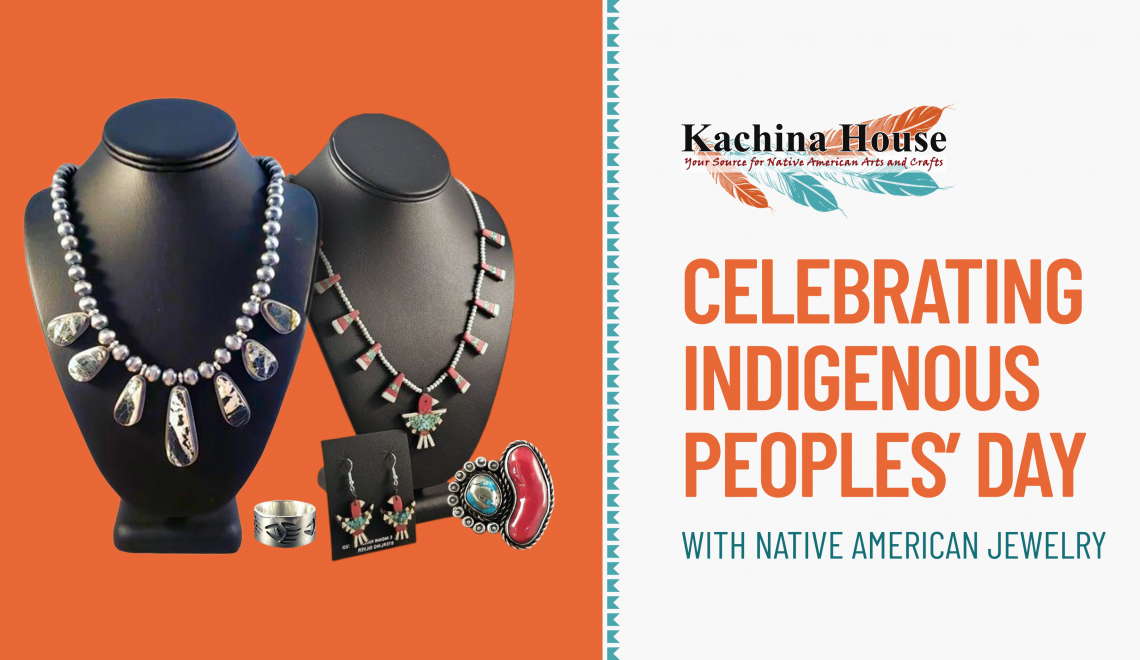
Indigenous Peoples’ Day arrives on the second Monday in October, offering an opportunity to recognize and celebrate Native American cultures, histories, and contributions. Rather than viewing this day as simply replacing Columbus Day, many communities see it as a chance to reflect on Indigenous resilience and to support contemporary Native American artists.
One way to honor this observance is through purchasing and wearing traditional Native American jewelry. Authentic pieces tell stories, carry spiritual significance, and directly support Indigenous artisans whose work preserves cultural heritage.
In this guide, you’ll discover:
- How jewelry honors Indigenous Peoples’ Day
- What defines traditional Native American jewelry
- How to respectfully support Indigenous artists
- Where to find authentic pieces
How Does Jewelry Honor Indigenous Peoples’ Day?
Traditional Native American jewelry goes far beyond decoration. For centuries, handcrafted pieces have served as expressions of identity, spirituality, and cultural continuity within tribal communities.
Spiritual Connection and Protection
Many Native Americans believe jewelry acts as a bridge between the wearer and spiritual forces. Materials such as turquoise, shell, bone, and coral are carefully selected for their sacred properties. Turquoise, for example, is widely recognized as a symbol of prosperity and protection. Wearing these pieces during daily life and ceremonies invites balance, harmony, and blessing.
Historically, jewelry marked important life transitions. Young people receiving their first beaded necklaces symbolized entry into adulthood. Couples exchanging turquoise rings during wedding ceremonies represented unity and lifelong partnership protected by spiritual forces.
Status, Identity, and Clan Connection
In many tribal societies, elaborate jewelry signified status, leadership, and clan membership. Chiefs, medicine people, and respected elders wore distinctive pieces that conveyed their status and wisdom. The Navajo squash blossom necklace, for instance, was often reserved for prominent figures during ceremonial occasions.
Traditional bracelets and cuffs served similar purposes, marking the wearer’s position within the community. Bolos, buckles, and ornamental pins also carried significance as markers of status and identity across different tribal traditions.
Supporting Living Cultures
Indigenous Peoples’ Day reminds us that Native American cultures are not historical artifacts but living, evolving communities. Supporting Indigenous artists through arts and crafts purchases directly contributes to economic development within tribal communities and helps preserve traditional crafting skills.
What Defines “Traditional” Native Jewelry?
Understanding what constitutes authentic traditional Native American jewelry helps ensure your purchases support genuine Indigenous creators.
Materials and Craftsmanship
Authentic traditional jewelry employs natural materials chosen for cultural and spiritual significance. These include:
- Turquoise: Prized for its protective and healing properties
- Sterling silver: Valued for durability and the skilled labor required to craft it
- Bone and Shell: Connected to ancestral traditions and natural resources
- Coral: Selected for its spiritual symbolism and beauty
- Beads: Crafted using techniques passed down through generations
Each piece reflects meticulous handwork. Master artisans spend years learning precise techniques, often passed down within families and tribal communities.
Cultural Motifs and Symbolism
Authentic pieces feature designs that carry cultural meaning. Animal motifs, geometric patterns, and clan symbols are incorporated intentionally, not as decorative afterthoughts. These designs tell stories about the wearer’s heritage, spiritual beliefs, and connection to the natural world.
Regional and Tribal Distinctiveness
Different tribes developed distinct jewelry styles. Hopi overlay silverwork, Navajo turquoise work, Zuni inlay techniques, and Pueblo beadwork each reflect unique cultural traditions and artistic perspectives. Recognizing these distinctions helps you appreciate the specific heritage designed into each piece.
Traditional forms such as earrings, pendants, and vintage pieces showcase the diversity of tribal artistry. Some pieces represent centuries-old techniques, while others reflect contemporary artists drawing from ancestral knowledge. Understanding these distinctions ensures you’re supporting authentic cultural expression rather than generic reproductions.
How to Respectfully Honor Indigenous Peoples’ Day
When celebrating Indigenous Peoples’ Day through jewelry, remember these important guidelines:
Do: Purchase from reputable Indigenous-focused businesses and directly from tribal artisans whenever possible..
Do: Learn the meaning behind pieces you wear or gift to others.
Do: Support organizations working to preserve Indigenous languages, lands, and cultural practices.
Don’t: Purchase mass-produced “Native American inspired” jewelry from mainstream retailers. These pieces often incorrectly appropriate sacred imagery and provide no benefit to Indigenous communities.
Don’t: Wear stereotypical costumes or ceremonial items not meant for casual occasions. Many pieces carry spiritual significance appropriate only for specific contexts.
Don’t: Assume all Indigenous jewelry follows one style. Native American cultures are diverse, each with distinct artistic traditions.
Explore Authentic Collections
Ready to meaningfully celebrate Indigenous Peoples’ Day? Visit Kachina House to discover our carefully curated collection of traditional Native American jewelry and authentic Kachina dolls created by Indigenous artisans. Each piece honors tribal heritage while supporting contemporary Native American creators.
Our collection features work from trusted sources committed to fair compensation for artists and authentic cultural representation. By exploring pieces on our site, you invest in preserving living Native American traditions.

